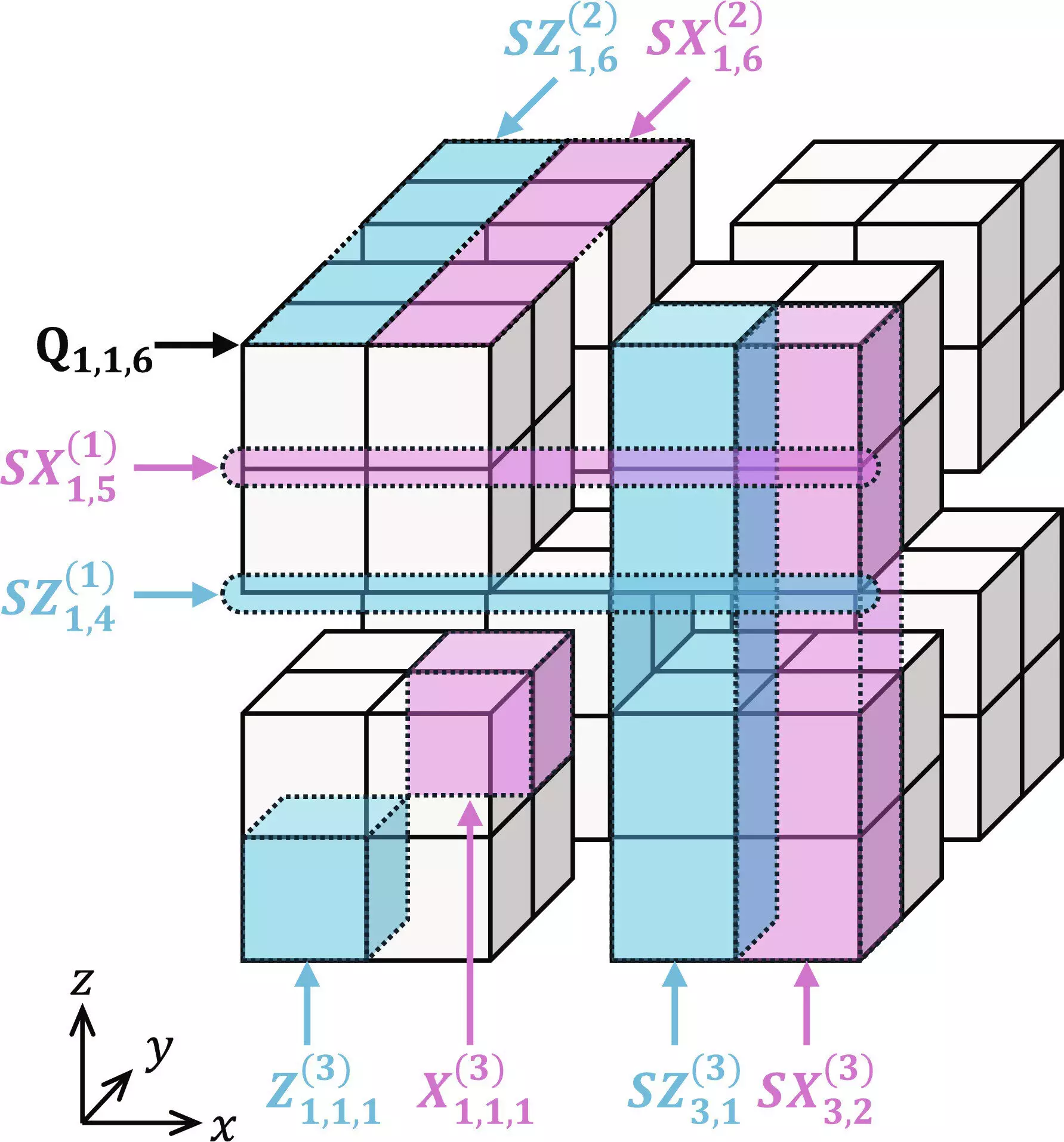In the world of quantum computing, the quest for efficient error correction methods is a crucial step towards the realization of fault-tolerant quantum computers. Hayato Goto, a researcher from the RIKEN Center for Quantum Computing in Japan, has introduced a novel approach known as “many-hypercube codes” in a recent publication in Science Advances. This innovative method offers a promising solution to the challenges of traditional quantum error correction techniques and paves the way for highly efficient fault-tolerant quantum computing.
Traditional quantum error correction strategies often involve encoding a single logical qubit onto multiple entangled physical qubits, followed by the use of a decoder to retrieve the logical qubit. However, scalability becomes a significant issue with this approach, as the number of required physical qubits increases dramatically, leading to substantial resource overheads. To address this limitation, researchers have explored high-rate quantum codes like quantum low-density parity-check codes. While these codes offer some advantages, they still face challenges in terms of efficiency due to the sequential setup of logical gates.
Hayato Goto’s “many-hypercube codes” present a unique perspective on quantum error correction. Unlike conventional methods, these codes leverage a mathematical concept known as a “hypercube” to visualize the logical qubits. This approach involves high-rate concatenated quantum codes, which exhibit a remarkable geometric structure that streamlines the error correction process. One key innovation of the many-hypercube codes is the introduction of a dedicated decoder based on level-by-level minimum distance decoding. This decoder not only enhances performance but also allows for the parallel setup of logical gates, akin to the parallel processing capabilities of classical computers.
The results of Goto’s work are truly impressive. The many-hypercube codes achieve an encoding rate of up to 30%, which is considered to be the highest among existing codes for fault-tolerant quantum computing. Despite this high rate, the performance of these codes remains on par with conventional low-rate codes, highlighting the efficiency and effectiveness of this innovative approach. By enabling parallel processing of logical gates and utilizing sophisticated decoding techniques, many-hypercube codes represent a significant advancement in the field of quantum error correction.
The development of many-hypercube codes holds great promise for the future of quantum computing. With their elegant geometry and high-performance capabilities, these codes offer a new pathway towards achieving fault-tolerant quantum computers. As researchers continue to explore innovative error correction methods, the foundation laid by Goto’s work may pave the way for a quantum computing revolution.

